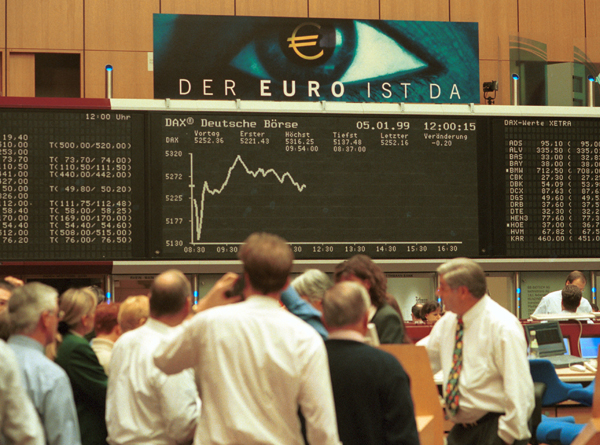Source

Source: Bildarchiv, B 145 Bild-00045375 REGIERUNGonline/Schambeck
On December 31, 1998, the currencies of Belgium, Germany, Finland, France, Ireland, Italy, Luxembourg, the Netherlands, Austria, Portugal, and Spain were pegged to each other and the Euro. On January 1, 1999, the Euro was introduced as a means of payment for non-cash transactions in the participating EU states. Denmark, Great Britain, and Sweden did not participate in the monetary union, and Greece was only admitted into the Euro Zone on January 1, 2001. The way in which foreign exchange rates were quoted made clear that the introduction of the Euro was also motivated by the desire to create a leading international currency. For instance, until the end of 1998, banks quoted the value of the U.S. dollar in Deutschmarks; afterwards, they quoted the value of the Euro in various foreign currencies. International investors showed trust in the new currency; the demand for stocks and bonds from the Euro Zone rose.

Source: Bildarchiv, B 145 Bild-00045375 REGIERUNGonline/Schambeck